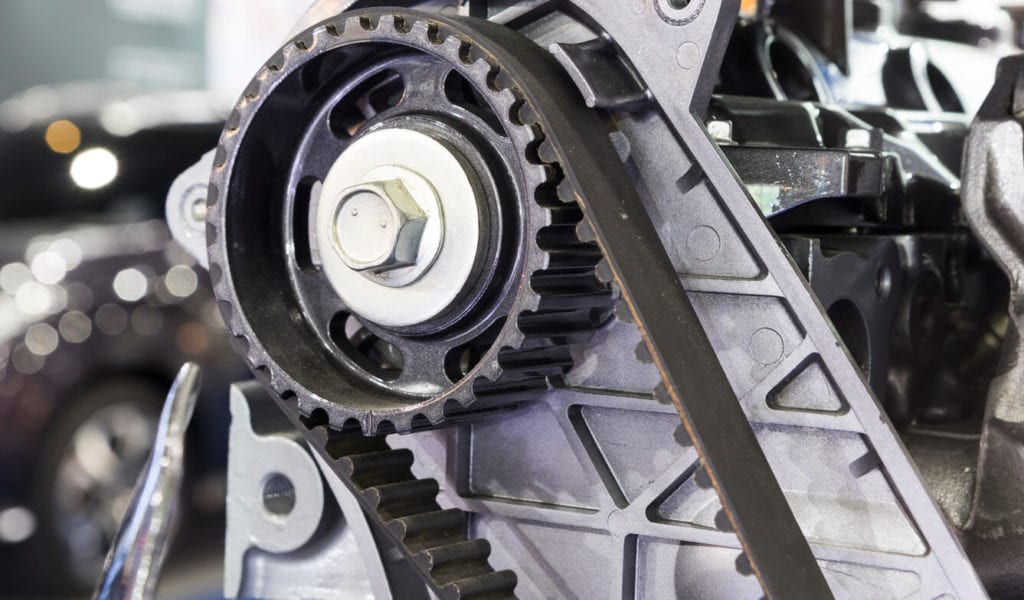Belt drives have a major role in rotary power transmission. Just try to peep under the hood of your automobile whether it’s a car or a SUV, you are sure to find atleast one timing belt in it. Here’s a typical application of the timing belt in an automobile.

This shows the usage of the belt from high torque transmission to very low torque transmission applications.
Let us now look into the aspects that make this timing belt so unique for rotary power transmission.
1. The timing belts provide a positive drive; by this we mean that there is no slip and relative motion between the belt and the pulleys thus maintaining a constant speed ratio or even a specific timed position.
2. The constructional aspect of the timing belt i.e. the teeth in the belt help in transmitting large torques and are capable of withstanding high accelerations.
3. The lesser cross sectional thickness of the belt enables the belt to be more flexible and at times they are able to drive various pulleys in the system very efficiently.
Constructional Aspects of the Timing Belt
The timing belt is basically a flat belt with evenly spaced teeth in its inner circumference. The teeth provide the advantage that a gear or chain drive posses – positive transmission of rotation and power.

As shown in the figure above, the timing belt consists of
1. Steel Wire or the tension member – This is usually a wire that takes up the load and provided the reinforcement to the belt. The various materials that are used for the tension member are steel wire, glass fibres, Kevlar and polyester cords
2. Base Material (Neoprene) – A good coat of neoprene is provided to the tension member in order to prevent any damage to it by oil and moisture. It also acts as a wear resistor. The teeth formed by the neoprene are shear resistant as they are molded integrally along with the other elements of the belt.
3. Nylon Coating – A film of nylon fabric coating is provided on the external layers of the belt which provides a low co efficient of friction for the surfaces that wear out quickly.
There are two types of tooth shapes in the timing belt. They are
1. Trapezoidal Type – The trapezoidal type tends to have a trapezoidal profile of the teeth that in turn mesh with a pulley possessing involute teeth. The trapezoidal shape is actually that of an involute produced with an outside diameter which is lesser than the pitch diameter.
2. Curvilinear Type – The curvilinear tooth profile is a circular arc. This profile has some specific advantages like non tooth jumping due to increased depth of the tooth in the pulley, higher contact area of the tooth and hence a better power transmitting capacity, etc.
A comparison figure is shown below indicating the profile types and geometry of the belt and the pulley

The belts are normally specified based on the pitch of the teeth like 5mm, 8mm , etc. The width of the belt may tend to vary based on the power or torque required to be transmitted.


